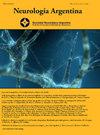El rol modulador de lesiones en sustancia blanca en la mediación entre IMC, lípidos, presión arterial y niveles de glucosa
Q4 Medicine
引用次数: 0
Abstract
Introduction
Cardiometabolic alterations affect glycemic control, but the modulatory role of cerebral white matter lesions in these associations is not yet fully understood.
Objective
To evaluate whether the presence of cerebral white matter lesions moderates the relationship between BMI and glucose through cardiometabolic markers.
Materials and Methods
Analytical secondary data study (n = 1904) of patients undergoing clinical evaluations and brain MRI. The independent variable was BMI and fasting glucose the dependent variable; mediators included LDL, triglycerides (TG), and systolic blood pressure (SBP); and the moderator was the presence of cerebral white matter lesions. Hayes’ PROCESS model 59 was used to assess direct, indirect, and moderated effects. The causal model was visualized with a directed acyclic graph.
Results
The effect of BMI on LDL (β = 1.47; p < 0.001), TG (β = 10.13; p < 0.001), and SBP(β = 1.45; p < 0.001) was attenuated in the presence of lesions, with significant negative interactions (LDL: β = −0.86; p = 0.036; TG: β = −3.89; p = 0.003; SBP: β = −0.81; p = 0.001). In the glucose model, BMI (β = 1.36; p < 0.001), TG (β = 0.015; p = 0.003), and SBP (β = 0.11; p = 0.004) showed positive associations. Lesions had no significant direct effect (β = 11.58; p = 0.12) but moderated the BMI-glucose (interaction: β = −0.49; p = 0.048) and TG-glucose (interaction: β = 0.058; p < 0.001) relationships. The indirect effect of BMI on glucose via triglycerides was greater in the presence of lesions (β = 0.45; 95%CI: 0.25–0.75) than in their absence (β = 0.15;95%CI: 0.01-0.40). Mediation through SBP was significant in both groups (no lesions: β = 0.15; with lesions: β = 0.07).
Conclusions
The indirect effects of BMI on glucose are modulated by the presence of cerebral white matter lesions, highlighting the modulatory role of brain damage in the pathways linking adiposity and glycemic control.
白质损伤在BMI、血脂、血压和血糖水平调节中的调节作用
心脏代谢改变影响血糖控制,但脑白质病变在这些关联中的调节作用尚不完全清楚。目的探讨脑白质病变是否通过心脏代谢指标调节BMI与血糖的关系。材料与方法分析性二次资料研究(n = 1904)进行临床评估和脑MRI检查的患者。自变量为BMI,因变量为空腹血糖;介质包括LDL、甘油三酯(TG)和收缩压(SBP);大脑白质损伤的出现是缓和因素。Hayes的PROCESS模型59用于评估直接、间接和调节效应。用有向无环图将因果模型可视化。结果BMI对LDL (β = 1.47; p < 0.001)、TG (β = 10.13; p < 0.001)和收缩压(β = 1.45; p < 0.001)的影响在病变存在时减弱,存在显著的负相互作用(LDL: β = - 0.86; p = 0.036; TG: β = - 3.89; p = 0.003;收缩压:β = - 0.81; p = 0.001)。在葡萄糖模型中,BMI (β = 1.36; p < 0.001)、TG (β = 0.015; p = 0.003)和收缩压(β = 0.11; p = 0.004)呈正相关。病变对bmi -葡萄糖(相互作用:β = - 0.49; p = 0.048)和tg -葡萄糖(相互作用:β = 0.058; p < 0.001)关系没有显著的直接影响(β = 11.58; p = 0.12)。存在病变时,BMI通过甘油三酯对葡萄糖的间接影响(β = 0.45; 95%CI: 0.25-0.75)大于无病变时(β = 0.15;95%CI: 0.01-0.40)。两组通过收缩压介导均显著(无病变:β = 0.15;有病变:β = 0.07)。结论BMI对血糖的间接影响受到脑白质损伤的调节,突出了脑损伤在肥胖和血糖控制通路中的调节作用。
本文章由计算机程序翻译,如有差异,请以英文原文为准。
求助全文
约1分钟内获得全文
求助全文
来源期刊

Neurologia Argentina
Medicine-Neurology (clinical)
CiteScore
0.50
自引率
0.00%
发文量
34
期刊介绍:
Neurología Argentina es la publicación oficial de la Sociedad Neurológica Argentina. Todos los artículos, publicados en español, son sometidos a un proceso de revisión sobre ciego por pares con la finalidad de ofrecer información original, relevante y de alta calidad que abarca todos los aspectos de la Neurología y la Neurociencia.
 求助内容:
求助内容: 应助结果提醒方式:
应助结果提醒方式:


